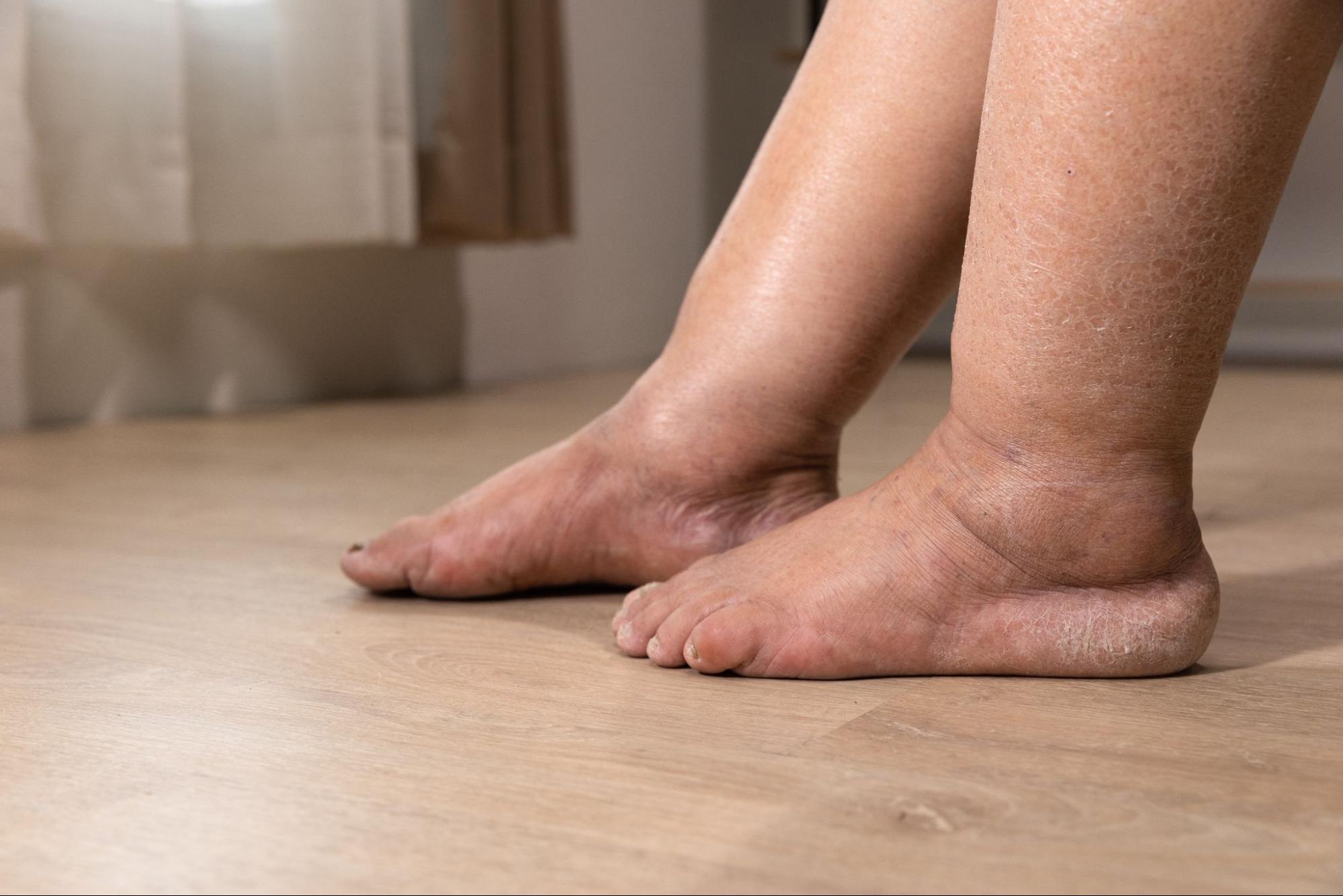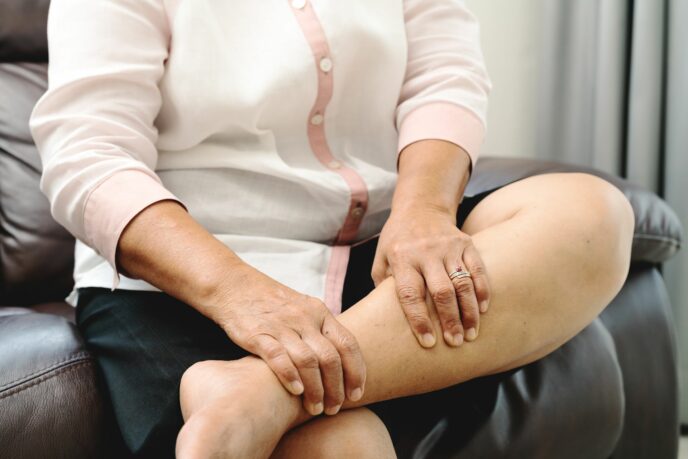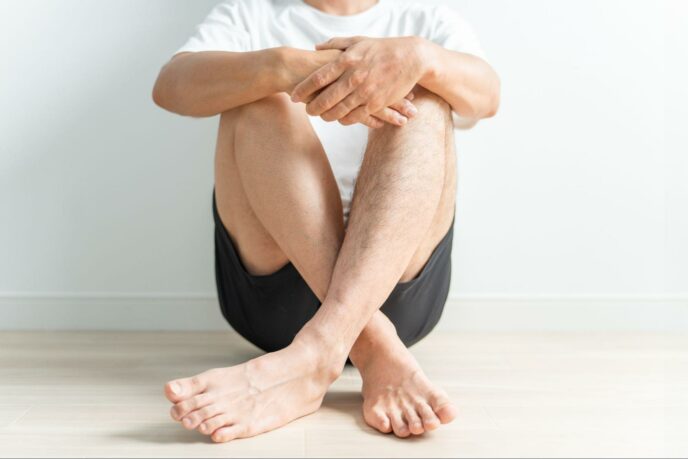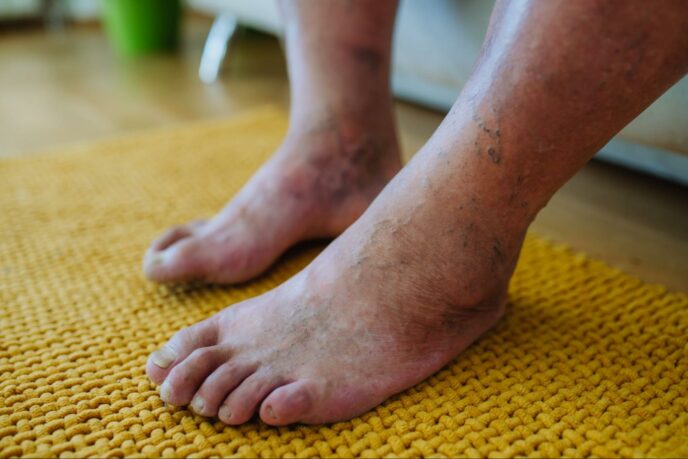
Why Are My Legs Swollen?
Swollen legs, known as peripheral edema, can occur in one or both legs and can range from mild to severe. In some cases, it may also be accompanied by pain, tenderness, or a feeling of heaviness in the legs. While occasionally it might be a result of something minor like standing or sitting for prolonged periods, persistent or severe swelling could indicate an underlying health issue. One condition that may cause your legs to swell is Peripheral Artery Disease (PAD), a vascular condition that narrows the arteries and reduces blood flow to the limbs, particularly the legs. In this blog, we’ll dive into the causes of swollen legs, how PAD leads to swollen legs, and effective treatment options.
Causes of Swollen Legs
Chronic Venous Insufficiency
Chronic venous insufficiency is a medical condition that happens when the veins in the legs are unable to efficiently return blood to the heart. This condition can cause fluid buildup, swelling, and discomfort in the legs. Over time, it can also lead to skin changes, such as discoloration, ulcers, and even infections.
Congestive Heart Failure
Congestive heart failure is a medical condition where the heart becomes weak and struggles to pump blood efficiently throughout the body. Heart failure can lead to fluid buildup in different parts of the body, especially in the legs and ankles. The accumulation of excess fluid in these areas can cause swelling, making it difficult to walk or stand for long periods of time.
Deep Vein Thrombosis (DVT)
Deep vein thrombosis, commonly known as blood clot formation, occurs when a blood clot forms in one or more of the deep veins in the legs. When this happens, blood flow can be obstructed, causing swelling in the affected area. This swelling is often accompanied by pain and warmth in the affected leg.
Inflammation
Inflammation is a natural response of the body’s immune system. It occurs when the immune system detects an injury or infection, and it sends out white blood cells and other protective substances to the affected area to fight off any potential threats. This process often leads to localized swelling, redness, and warmth as blood flow is increased to the area. In particular, inflammation can cause swelling in the leg when you experience arthritis or a broken ankle, foot, or leg.
Kidney Disease
Kidney disease, also known as renal disease, is a condition that can affect the normal functioning of your kidneys. When the kidneys cannot filter waste products from the blood, they can accumulate fluids in different parts of the body, including the legs. This fluid retention can cause swelling, which can vary in severity depending on the stage of the disease.
Liver Disease
Liver disease can cause complications in the body, including the disruption of fluid balance. When this happens, excess fluid can accumulate in various parts of the body, leading to swelling or edema. Swelling is particularly common in the lower extremities, such as the feet, ankles, and legs. The swelling may be mild or severe and can cause discomfort, pain, or difficulty in movement.
Lymphedema
Lymphedema is a chronic medical condition that occurs when the lymphatic system, which is responsible for draining excess fluid from the body, is compromised and unable to function properly. This results in the accumulation of lymphatic fluid in the affected area, leading to swelling and pain in the legs.
Peripheral Artery Disease (PAD)
Peripheral artery disease, also known as peripheral vascular disease, occurs when plaque builds up in the arteries, reducing blood flow to the limbs. This buildup is often a result of atherosclerosis, a condition where fatty deposits (plaque) accumulate in the arteries, narrowing them over time. While PAD can affect arteries throughout the body, it commonly affects the arteries of the legs. Narrowed arteries in the legs can lead to reduced blood flow, which can cause several issues, such as swelling, pain, and cramping during physical activity.
The Link Between PAD and Swollen Legs
When blood flow to the legs is restricted due to PAD, several symptoms can arise, including swelling (edema). Here’s how it happens:
Poor Circulation
Reduced blood flow means that oxygen and vital nutrients have difficulty reaching the tissues in the legs. Poor circulation can lead to swelling as fluid accumulates in the affected area.
Fluid Retention
The decreased circulation can disrupt the balance of fluids in the legs, causing them to retain fluid. This retention manifests as swelling, particularly in the ankles and feet.
Inflammation
PAD often triggers an inflammatory response in the body. Chronic inflammation can exacerbate swelling, making it more pronounced and persistent.
Other Symptoms of PAD
While swollen legs are a common symptom of PAD, they are not the only indicator. Other symptoms may include:
- Leg pain, particularly during activity (claudication)
- Numbness or weakness in the legs
- Coldness in the lower leg or foot
- Sores or wounds on the legs or feet that heal slowly
- Changes in skin color or shiny skin on the legs
If you experience any of these symptoms, especially with swollen legs, it’s important to consult a healthcare professional for a proper diagnosis and treatment plan.
Treating PAD and Swollen Legs
While PAD is a chronic condition, several lifestyle changes and medical treatments can help manage its symptoms and slow its progression:
Exercise
Regular physical activity can improve circulation and alleviate symptoms of PAD. Consult your doctor for a suitable exercise regimen.
Healthy Diet
A balanced diet low in saturated fats and cholesterol can help reduce plaque buildup in the arteries.
Medications
Your doctor may prescribe medications to manage symptoms and lower your risk of complications, such as blood thinners or medications to lower cholesterol.
Lifestyle Modifications
Quitting smoking, maintaining a healthy weight, and managing other health conditions like diabetes can all help improve PAD symptoms.
Minimally Invasive Treatments
In cases where PAD is severe, and lifestyle changes and medications aren’t sufficient, minimally invasive PAD treatments such as angioplasty, atherectomy, or stent placement may be recommended.
Angioplasty
An angioplasty is a minimally invasive procedure where a balloon-tipped catheter is used to widen narrowed or blocked arteries, improving blood flow.
Atherectomy
An atherectomy Involves using a catheter with a cutting device to remove plaque from the artery, restoring blood flow.
Stent Placement
A stent placement Involves placing a small mesh tube (stent) in the artery to keep it open and improve blood flow.
Reduce Leg Swelling with American Endovascular
Swollen legs can be a sign of underlying vascular issues like Peripheral Artery Disease. Understanding the relationship between PAD and swollen legs is crucial for timely diagnosis and treatment. If you’re experiencing persistent swelling in your legs, along with other symptoms of PAD, don’t hesitate to reach out to our vascular specialists in NY and NJ. Early intervention, including advanced treatments like angioplasty, atherectomy, or stent placement, can help prevent complications and improve your quality of life. Contact us today to request an appointment at your nearest American Endovascular Center.
Related Blogs & Videos
Learn more about vascular health, prevention, and care for Peripheral Artery Disease.




